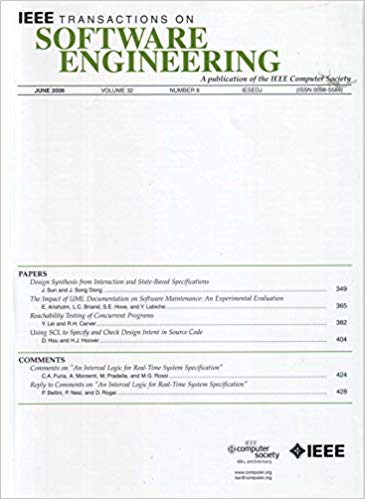MBL-CPDP:跨项目缺陷预测的多目标双层方法
IF 5.6
1区 计算机科学
Q1 COMPUTER SCIENCE, SOFTWARE ENGINEERING
引用次数: 0
摘要
跨项目缺陷预测(CPDP)利用机器学习(ML)技术来主动识别软件缺陷,特别是在项目特定数据稀缺的地方。然而,现有的CPDP方法存在三个关键的局限性:对高维参数空间的探索效率低下,对具有异构数据分布的不同项目的适应性差,以及对源项目和目标项目之间特征冗余和分布差异的处理不足。为了应对这些挑战,我们将CPDP制定为多目标双层优化(MBLO)方法,称为MBL-CPDP。我们的方法包括两个嵌套的问题:上层是一个多目标组合优化问题,通过优化集成了特征选择、迁移学习和分类技术的机器学习管道来增强鲁棒性,而下层问题对它们的超参数进行微调。与采用碎片化优化策略或引入偏差的单目标方法的传统方法不同,MBL-CPDP提供了一个整体的端到端优化框架。此外,我们提出了一种集成学习方法,以更好地捕获跨项目分布差异,并提高跨不同数据集的泛化。然后提出了一种MBLO算法,有效地解决了公式化的MBLO问题。为了评估MBL-CPDP的性能,我们将其与20个项目中的5种自动化ML工具和50种CPDP技术进行了比较。大量的实证结果表明,MBL-CPDP优于比较方法,显示出其优越的适应性和综合绩效评价能力。本文章由计算机程序翻译,如有差异,请以英文原文为准。
MBL-CPDP: A Multi-Objective Bilevel Method for Cross-Project Defect Prediction
Cross-project defect prediction (CPDP) leverages machine learning (ML) techniques to proactively identify software defects, especially where project-specific data is scarce. However, existing CPDP approaches suffer from three critical limitations: ineffective exploration of high-dimensional parameter spaces, poor adaptability across diverse projects with heterogeneous data distributions, and inadequate handling of feature redundancy and distribution discrepancies between source and target projects. To address these challenges, we formulate CPDP as a multi-objective bilevel optimization (MBLO) method, dubbed MBL-CPDP . Our approach comprises two nested problems: the upper-level, a multi-objective combinatorial optimization problem, enhances robustness by optimizing ML pipelines that integrate feature selection, transfer learning, and classification techniques, while the lower-level problem fine-tunes their hyperparameters. Unlike traditional methods that employ fragmented optimization strategies or single-objective approaches that introduce bias, MBL-CPDP provides a holistic, end-to-end optimization framework. Additionally, we propose an ensemble learning method to better capture cross-project distribution differences and improve generalization across diverse datasets. An MBLO algorithm is then presented to effectively solve the formulated MBLO problem. To evaluate MBL-CPDP ’s performance, we compare it with five automated ML tools and 50 CPDP techniques across 20 projects. Extensive empirical results show that MBL-CPDP outperforms the comparison methods, demonstrating its superior adaptability and comprehensive performance evaluation capability.
求助全文
通过发布文献求助,成功后即可免费获取论文全文。
去求助
来源期刊

IEEE Transactions on Software Engineering
工程技术-工程:电子与电气
CiteScore
9.70
自引率
10.80%
发文量
724
审稿时长
6 months
期刊介绍:
IEEE Transactions on Software Engineering seeks contributions comprising well-defined theoretical results and empirical studies with potential impacts on software construction, analysis, or management. The scope of this Transactions extends from fundamental mechanisms to the development of principles and their application in specific environments. Specific topic areas include:
a) Development and maintenance methods and models: Techniques and principles for specifying, designing, and implementing software systems, encompassing notations and process models.
b) Assessment methods: Software tests, validation, reliability models, test and diagnosis procedures, software redundancy, design for error control, and measurements and evaluation of process and product aspects.
c) Software project management: Productivity factors, cost models, schedule and organizational issues, and standards.
d) Tools and environments: Specific tools, integrated tool environments, associated architectures, databases, and parallel and distributed processing issues.
e) System issues: Hardware-software trade-offs.
f) State-of-the-art surveys: Syntheses and comprehensive reviews of the historical development within specific areas of interest.
 求助内容:
求助内容: 应助结果提醒方式:
应助结果提醒方式:


